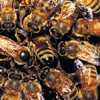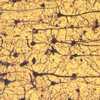ECOL 497S/597S:
TOPICS IN SOCIAL INSECT BIOLOGY

description |

syllabus |

ECOL567 |

ECOL596V |

ECOL596H |

all EEB courses |

Soc. Ins. Lab |

description |

syllabus |

ECOL567 |

ECOL596V |

ECOL596H |

all EEB courses |

Soc. Ins. Lab |
| Date | Topic | Presenter | Reading |
| Aug 25 | Decided on topics and schedule | Dornhaus | |
| Sep 1 | Overview of class and social insect biology, tips on talks | Dornhaus | |
| Sep 8 | Evolution of eusociality I: kin selection and haplodiploidy [also: Ant Course in Borneo by Pedro] | Dornhaus | |
| Sep 15 | Mechanisms of task allocation (division of labor): in particular, the role of learning | Lisa (Danfeng) Wang | Ravary et al. |
| Sep 22 | Behavioral syndromes in social insects? | Vishwas Boregowda | Raine et al. |
| Sep 29 | Evolution of eusociality II: kin vs. group selection and recent controversy | Alex Walton | Nowak et al.; perhaps also look at the older paper Wilson & Hoelldobler |
| Oct 6 | Social genomics | Ryan Ruboyianes | Gadau et al. or Bonasio et al.; for a review, check Robinson et al. |
| Oct 13 | The superorganism concept | Pedro Rodrigues | Strassman & Queller; I also recommend the recent editorial |
| Oct 20 | Evolution of sociality in spiders | Scott Trageser | Agnarsson et al. |
| Oct 27 | Evolution of learning in bees and other insects | Aimee Dunlap | Dunlap & Stephens |
| Nov 3 | A discussion on group selection | Omar Eldakar | Wilson & Wilson; perhaps also check out DS Wilson's blog letter to Dawkins |
| Nov 10 | Structure and function of ant brains | Wulfila Gronenberg | Gronenberg |
| Nov 17 | Caste evolution | Scott Powell | Powell; also check out this list for other relevant literature |
| Nov 24 | Evolution and development of morphological castes in ants | Diana Wheeler | Heinze & Tsuij (focus on winglessness) and Mole et al. |
| Dec 1 | Evolution of body size in insects | Goggy Davidowitz | Kaspari |
| Dec 8 | Discussion & remaining who's whos | Anna Dornhaus | - |